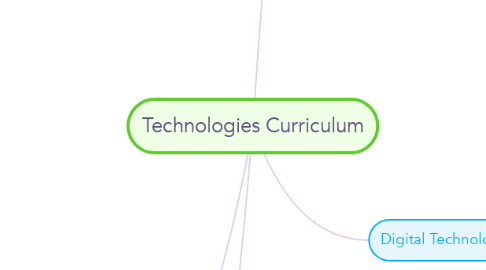
1. Aims
1.1. Investigate, plan, implement and evaluate solutions.
1.2. Understand how technologies have developed over time.
1.3. Are creative, innovative and enterprising when working with technologies.
1.4. Make informed and ethical decisions when it comes to the use of technology.
1.5. Engage with and select appropriate technologies when designing solutions.
1.6. Critique, analyse and evaluate problems and develop solutions.
2. Rational
2.1. Ensuring all students learn how technology has transformed the world in which we live in.
2.2. Technology affects us on a global scale.
2.3. Development in technology allows us to create more sustainable pattern of living.
2.4. Technology has the potential to transform, restore and sustain future societies and environments.
2.5. Develop skills in how to respond to needs both current and in the future.
2.6. Understanding the process technologies are developed in and how they impact on societies.
2.7. Exploring technological solutions and their own personal values as well as the values of those around them.
2.8. Experimentation, problem solving, prototyping and evaluating to show the importance of planning.
2.9. Consider desired patterns of sustainable living as well as their own preferred futures for themselves and others.
3. General Capabilities
3.1. Literacy
3.1.1. communicating ideas
3.1.2. Read and interpret instructions
3.1.3. vary their language depending on context
3.2. Numeracy
3.2.1. recognise the role of mathematics with the technology world
3.2.2. when understanding statistics
3.2.3. when using and developing software
3.2.4. Technical drawings
3.3. ICT Capabilties
3.3.1. access, create and communicate ideas through technology
3.3.2. Adapting to new and evolving technologies
3.3.3. investigate and create digital solutions
3.3.4. Improve ICT skills and abilities
3.4. Critical and creative thinking
3.4.1. learning how to generate and evaluate knowledge
3.4.2. identify and clarify technology information
3.4.3. think critically and creatively about preferred futures
3.5. Personal and social capabilities
3.5.1. learn to understand themselves and others
3.5.2. recognising an regulating emotions
3.5.3. managing projects and collaborating with group members
3.5.4. Sharing new ideas
3.6. Ethical understanding
3.6.1. Aware of the effects of their values and behaviours on those around them
3.6.2. explore complex issues associated with technologies
3.6.3. safe and ethical procedures
3.7. Intercultural Understanding
3.7.1. engaging with new cultures
3.7.2. technologies used in other cultures
4. Cross Curricular Priorities
4.1. Aboriginal and Torres Strait Islander Histories and cultures
4.1.1. The cultures capacity for innovation
4.2. Asia and Australia's engagement with Asia
4.2.1. Interaction between human activity and diverse environments.
4.3. Sustainability
4.3.1. Authentic contexts for preferred futures
5. Student Diversity
5.1. The diverse design of the technology curriculum allows for teachers to be flexible and to cater for the different learning needs of their students.
5.2. Ability to personalise learning
5.3. For students with a disability:
5.3.1. Adjust methods of assessment
5.3.2. curriculum allows easy fleixbility with regards to content level
5.4. English as a second language
5.4.1. May require additional one on one teaching to assist with the literacy and learning skills.
5.5. Gifted and Talented
5.5.1. allowing students to work more in depth with the subject (room for more exploring)
5.5.2. Using the higher order thinking skills and questioning
6. Design and Technologies
6.1. Design thinking
6.2. Design solutions
7. Digital Technologies
7.1. Computation thinking
7.2. Information systems
7.3. Design digital solutions
8. Bands
8.1. Foundation to Year 2
8.2. Years 3 and 4
8.3. Years 5 and 6
8.4. Years 7 and 8
8.5. Years 9 and 10
9. Strands
9.1. Design and Technologies knowledge and understanding
9.1.1. Technologies and society (their relationship) ACTDEK001
9.1.2. Technologies and their contexts
9.1.2.1. Engineering Principles and systems ACTDEK002
9.1.2.2. Food and Fibre Productions ACTDEK003
9.1.2.3. Materials and Technologies Specialisations ACTDEK004
9.2. Design and Technologies processes and production skills
9.2.1. Creating solutions
9.2.1.1. Investigating and Defining
9.2.1.2. Designing
9.2.1.3. Producing and Implementing
9.2.1.4. Evaluating
9.2.1.5. Collaborating and Managing
10. Bands
10.1. Foundation to year 2
10.2. Years 3 and 4
10.3. Years 5 and 6
10.4. Years 7 and 8
10.5. Years 9 and 10
11. Strands
11.1. Digital Technologies Knowledge and Understanding
11.1.1. Digital Systems ACTDIK001
11.1.2. Representation of data ACTDIK002
11.1.2.1. Text, numeric, images and sounds
11.2. Digital Technologies Processes and Production Skills
11.2.1. Collecting, managing and analysing data ACTDIP003
11.2.2. Digital Implementation
11.2.2.1. Communicating data ACTDIP003
11.2.2.2. Engage with others and their information ACTDIP006
11.2.3. Creating Solutions
11.2.3.1. Investigate and define
11.2.3.2. Design
11.2.3.3. Producing and implementing
11.2.3.4. Evaluating
11.2.3.5. Collaborating and managing
12. Resources
12.1. Alice Program
12.1.1. The Alice resource introduces students step by step into the programming world. It is designed to be introduced roughly in year 5; however, depending on your students abilities it can be earlier or later.
12.1.2. Covers all the basic programming skills and terminology one would experience in an introductory programming course.
12.1.3. The program increases in complexity as your students increase in confidence an ability.
13. Resources
13.1. Box Island
13.1.1. A virtual 3D world where students complete puzzles to move around an island.
13.1.2. Compatible with iPhone, iPad and iPod
13.1.3. Introduces students to the world of coding. Teaching them: algorithmic thinking, pattern recognition, sequencing, loops, conditionals and debugging.
